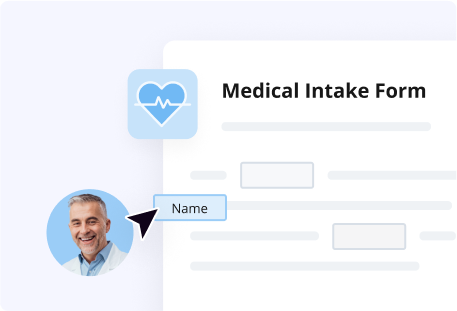Type any topic that interests you
Unlock the ins and outs of automating general patient intake form template for interview questions with training course

About the training program
You’ll learn to design a streamlined and automated patient admission process using airSlate. This skill will enable you to boost the efficiency and accuracy of your patient intake process, ultimately saving time and getting rid of mistakes.
What’s included in the training course:
- Classes covering the main elements of making a Flow.
- Quiz enabling you to brush up on what you’ve already learned about general patient intake Unlock the ins and outs of automating general patient intake form template for interview questions with training course for interview questions with training course.
- Badge reflecting the milestones you achieved throughout the program.
What will you discover in this training course?
- How to make general patient intake Unlock the ins and outs of automating general patient intake form template for interview questions with training course Flow with dynamic fillable form(s).
- How to create a conditional order of steps within your flow for interview questions.
- How to automate information routing between external programs and systems and your form.
- How to get information from patient intake processes with airSlate training course.
For whom this training course will the best fit?
- Doctors, nurse practitioners, and physicians looking to improve the quality of interview questions care they offer.
- Front office staff treating administrative matters and patient information updates, including the handling of general patient intake Unlock the ins and outs of automating general patient intake form template for interview questions with training course.
- Administrators handling the IT side of healthcare activities and interactions with patients.
More courses you might like
What our students say
Start learning today
Sign now for free
Questions & answers
We designed our program for everyone involved in interview questions care who is looking for ways to improve the patient admission experience through the use of modern tech. This group is represented by healthcare professionals with an array of task: from doctors and nursing staff to front-office admins and receptionists. Also, our general patient intake form template course will be handy for IT specialists searching for automated ways to design and implement efficient and safe systems for gathering and dealing with patient information.
Medical employees deal with numerous issues when dealing with paper-based general patient intake or form template created by unreliable features. These include Illegible handwriting, error-prone data handling, ineffective wet-signature collection, and compliance issues. Avoid these inefficiencies by engaging an automated general patient intake form template that you can create and configure quickly with airSlate.
airSlate is focused on flexibility. You can select how to start creating your Flow: completely from scratch, utilizing your own document(s), or get a head-start with our ready-to-use general patient intake form template templates. You can find more in-depth details on setting up and launching the Flow within our new training course.
airSlate Academy is your go-to option for learning how to take your medical care practice to another level and streamlining your essential processes, including general patient intake form template flow processing. The program is free and self-paced, so you can take it at any time and on your own terms. Don’t hesitate and register for our new training course today!
The purpose of general patient intake form template is to collect and deal with essential information, usually at the initial point of interaction with a patient. This data typically consists of demographic details, medical history, insurance details, and other details that can help healthcare employees make certain that the patients obtain outstanding treatment. By gathering these details, healthcare providers can streamline the care process and make sure patients receive the best possible care.
Common bottlenecks of the general patient intake process include manual information entry in form template, long wait times, and the risks of losing or misplacing patient records. Automation will let address these issues by digitizing patient intake operations, automating routine tasks including filling out personal data and medical history forms for interview questions care, and keeping patient records electronically, which can improve precision, decrease waiting periods, and improve document encryption.











